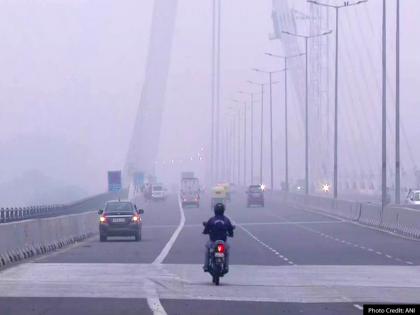Delhi Air Pollution: AQI Remains 'Very Poor' as Smog Engulfs NCR (Video)
By Lokmat English Desk | Updated: November 28, 2024 08:20 IST2024-11-28T08:16:12+5:302024-11-28T08:20:16+5:30
Delhi's air quality remained in the "very poor" category on Thursday, with the Air Quality Index (AQI) recorded at ...

Delhi Air Pollution: AQI Remains 'Very Poor' as Smog Engulfs NCR (Video)
Delhi's air quality remained in the "very poor" category on Thursday, with the Air Quality Index (AQI) recorded at 304 at 6 a.m., according to the Central Pollution Control Board (CPCB). Although the AQI dropped to the "poor" category on Tuesday, it slipped back into the "very poor" range on Wednesday and continues to remain at that level.
#WATCH | A layer of haze covers the Barapulla area in Delhi. As per the Central Pollution Control Board (CPCB), the air quality in the area remains in 'very poor' category.
— ANI (@ANI) November 28, 2024
(Drone visuals shot at 6:45 am) pic.twitter.com/tza59MiE9U
Several areas in Delhi remain in the "severe" category for air pollution. The area around India Gate is covered in smog, with high-rise buildings in the vicinity shrouded in haze and visibility reduced.
Visuals from India Gate:
#WATCH | Delhi: A layer of haze shrouds the national capital as the air quality remains in 'Very Poor' category, in several areas in Delhi, as per the Central Pollution Control Board (CPCB).
— ANI (@ANI) November 28, 2024
(Visuals from India Gate) pic.twitter.com/DKGKlkheiU
AQI readings across parts of Delhi include Mundka (370), Anand Vihar (359), Jahangirpuri (357), Dwarka-Sector 8 (333), Wazirpur (333), Vivek Vihar (330), Rohini (320), RK Puram (313), Aya Nagar (311), and Okhla Phase-2 (301).
Schools Continue Hybrid Mode
In response to the ongoing pollution crisis, schools across Delhi-NCR continue to operate in hybrid mode, offering both online and in-person classes to minimize children's exposure to harmful air quality. This follows the directive from the Commission for Air Quality Management (CAQM) to reduce health risks to students.
Delhi's Weather
Delhi's weather provided little relief, with the city experiencing its second-coldest night of the season at 10.4 degrees Celsius, slightly above the normal temperature. The India Meteorological Department (IMD) has forecast a further drop in nighttime temperatures to 9 degrees Celsius.
Pollutant Levels and Health Risks
The primary pollutants, PM2.5 and PM10, were recorded at 122 µg/m³ and 219 µg/m³, respectively, on Wednesday, a decrease from Tuesday's 143 µg/m³ and 325 µg/m³. These fine particles pose serious health risks, especially to vulnerable groups such as children, the elderly, and those with respiratory conditions.
Open in app